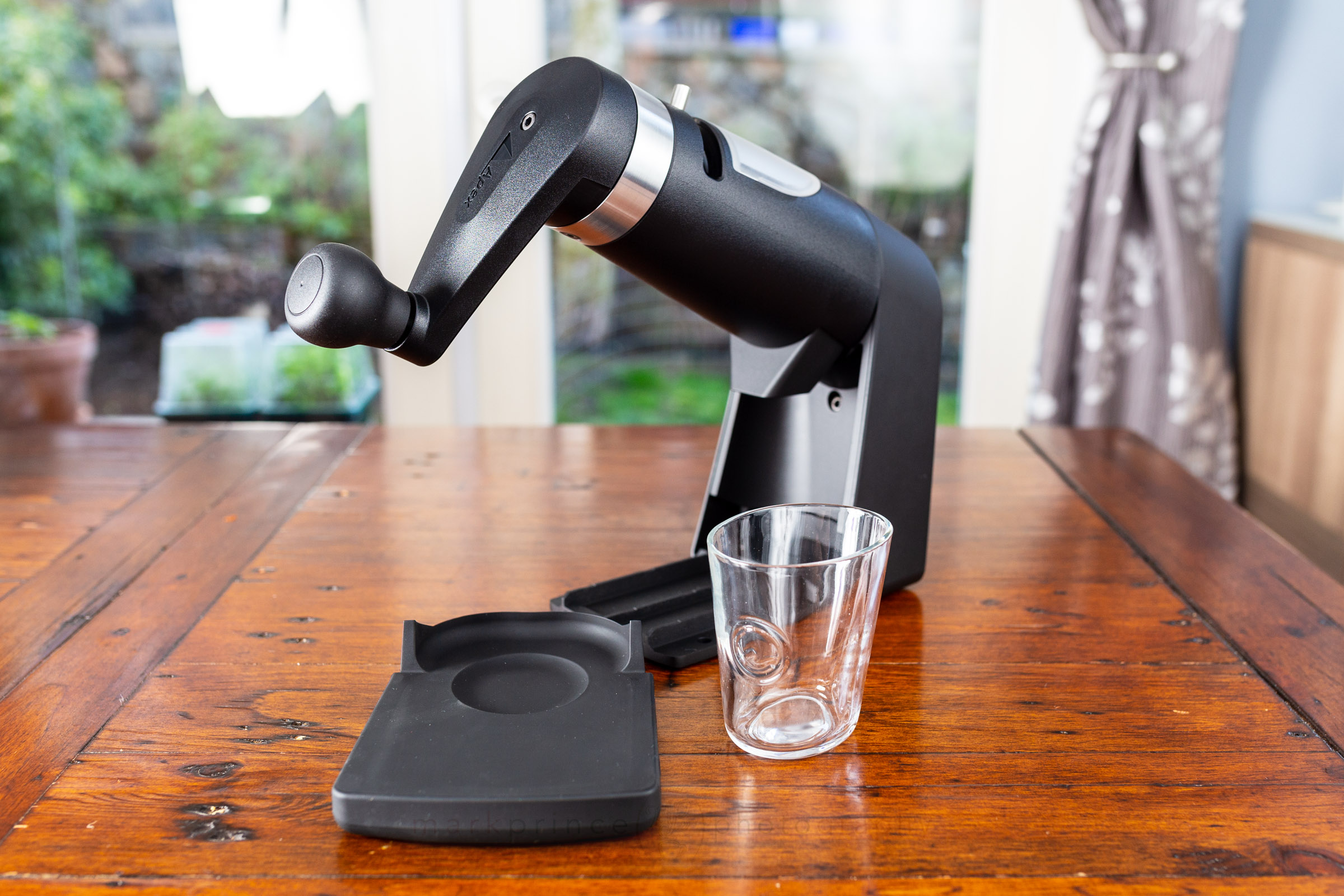Products You May Like
At over 5 kilograms, the Apex Grinder is easily the heaviest manual grinder you can buy today. The grinder comes complete with tools and even optional parts for you to really dive into it if you want and make modifications. Doug Garrett even has a bunch of videos on Youtube showing how to take the grinder apart, do routine maintenance on it, and even shows you how to install or remove the auger spring.
Indeed there is a lot going on under the covers of this grinder. Normally I would claim the burr set is the heart of a grinder, but on the Apex, the burrs, as impressive and unique as they are, have competition.
For instance, the Apex Grinder has a planetary gear set installed that translates a single crank you make on the handle to four turns of the burrs. Achieving an RPM of 400 or more is ridiculously easy on this grinder because of that gearing system.
The Apex Grinder also has five bearing sets inside; three up on the crank handle side, and two on the burr side. This just leads to a more smooth, more secure grinding system in its entirety; we cover this more below.
And then there’s the burr set. “Ghost Teeth Burrs”. That’s what they’re called. Usually found on industrial sized grinders, designed to grind 10s of kilos of coffee in a very short time, this grinder has them inside, which is entirely unique in the consumer grinder world.
We’re going to cover all three of these aspects, but let’s talk about the burr set first.
The Burr Set
Inside the Apex Grinder are two 75mm burr plates, one stationary, one that turns with the spindle, that are specifically manufactured for OE and this grinder. They are a cast steel flat burr, but instead of featuring directional sharpened cutting line surfaces like traditional flat and conical burrs, these feature a pyramid shaped prism of teeth. The entire burr set is cast this way, and the edges of each pyramid “tooth” is machine sharpened to give them their bite.
A long time ago, I visited a commodity coffee company’s production facility. I saw these rows of absolutely giant coffee roasters (called “six baggers” because each one could roast 6 full commercial bags of coffee, or 420kg of green coffee) doing their thing. I saw giant rooms filled with roasted coffee that was resting and degassing. Then I saw a series of machines churning out ground coffee at a wicked fast pace. A few ended up being roller grinders (which is something that deserves its own article); a few others had a front circular plate grinder that seemed to be grinding a kilo of coffee every 5 seconds or so.
I asked what kind of machine could possibly do that kind of grinding volume, and was shown the inside of one. It had this monstrous set of burrs I guessed were 300mm across, and the tooth pattern, while complex, were all shaped like pyramids, and strategically placed all around the round disk.
The most impressive thing about it was how uniform and even the grind output was from these grinders, as fast as they were. I asked why we don’t see this technology in home or even commercial grinders and I recall being told it wasn’t scalable down to consumer size.
Well, Orphan Espresso proved that wrong.
Let’s dig a bit deeper into this. My visit to the commodity coffee factory was almost 20 years ago; since then, “ghost teeth burrs” have made their way into commercial scale grinders, mostly in Asia. Almost every coffee kiosk, coffee cart, cafe has them in places like Taiwan and Hong Kong. Cafes like them because they are very fast. Most operate at around 1500RPM or even higher.
The problem with a ghost teeth burrset is they don’t like operating at high RPMs. The faster the RPMs, the more fines they produce. The industrial sized machines I witnessed ages ago spun at around 500-750RPM and also had at least 10x the cutting surface area that these commercial cafe grinders had.
The Garrotts were intrigued by these burrs and their potential. They had custom ones designed for their brew grinder project, but with the eye that somehow, they would spin the burr at no faster than 500RPM, because at that speed, the grind output was super uniform, and the fines were kept at bay.
But how to spin at 500RPM on a manual grinder? Enter the planetary gearbox.

